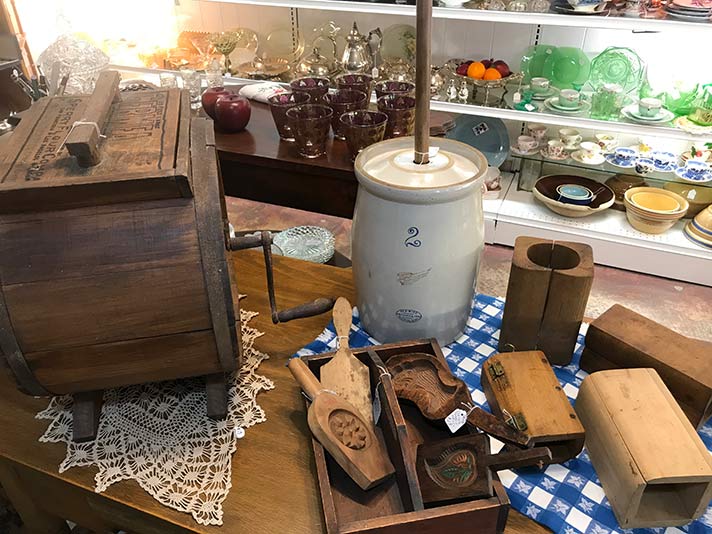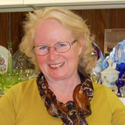Speaking of Antiquing – October 2020
Butter has been a mealtime staple for hundreds if not thousands of years. After the milking process, milk was left in a cool place to settle in shallow dishes of wood or ceramic. The settling dishes allowed the cream to rise to the top. Long-handled skimmers were used to lift the cream from the shallow dish while excess milk residue dripped off. The cream was placed in an earthenware or wooden churn.
Churning separates the butter fat from the butter milk. A churn dasher kept in constant motion in an up-and-down movement in an upright container is probably the most common type of churn. The churn dasher, also called a “plunger,” was typically made of wood with a cross or a perforated circle at the bottom. A lid with a hole to fit over the plunger covered the jar or crock.
Another popular churn, and somewhat larger for larger quantities of cream, is the barrel churn. Some can be the actual size of a water or wine barrel, and some were smaller, fitting on a tabletop, a wooden lid that fit tightly and a hand crank on the side. The crank turned a shaft that had wooden paddles to beat the cream. This type is also called the paddle churn.
Glass jars with a crank and paddles were popular in America in the 1930’s and ‘40’s. These churns have a unique style and are quite collectible; they were made for domestic use rather than farm use.
After the butter was churned, it was placed in a large, shallow, wooden or crockery bowl and worked with paddles called butter hands or butter paddles. Salt was added for flavor and preserving. The paddles were used to lift the butter into moulds or to make little balls of butter. Butter moulds were used to press out any remaining milk and to give it an attractive shape or design for use at the dining table. If the butter was for sale at market, it was given a design unique to the maker. Sometimes the press or stamp was for a pat size, a single serving placed on a ceramic dish with cold water to keep its shape.
Butter moulds were another reason to get creative. Some were intricately carved and painted in charming figural or geometric designs. These moulds were from France or Sweden, and are highly sought after, but they are not marked with any maker’s markings.
With so many households wanting to get back to simpler times, and perhaps off-grid living, churning your own butter might be just the thing to explore.
Pickety Place in Jacksonville is open every day, so come shop and find a treasure.

 Margaret Barns is co-owner of Pickety Place Antiques & Collectibles located at 130 N. 4th Street in Jacksonville. LIKE them on
Margaret Barns is co-owner of Pickety Place Antiques & Collectibles located at 130 N. 4th Street in Jacksonville. LIKE them on